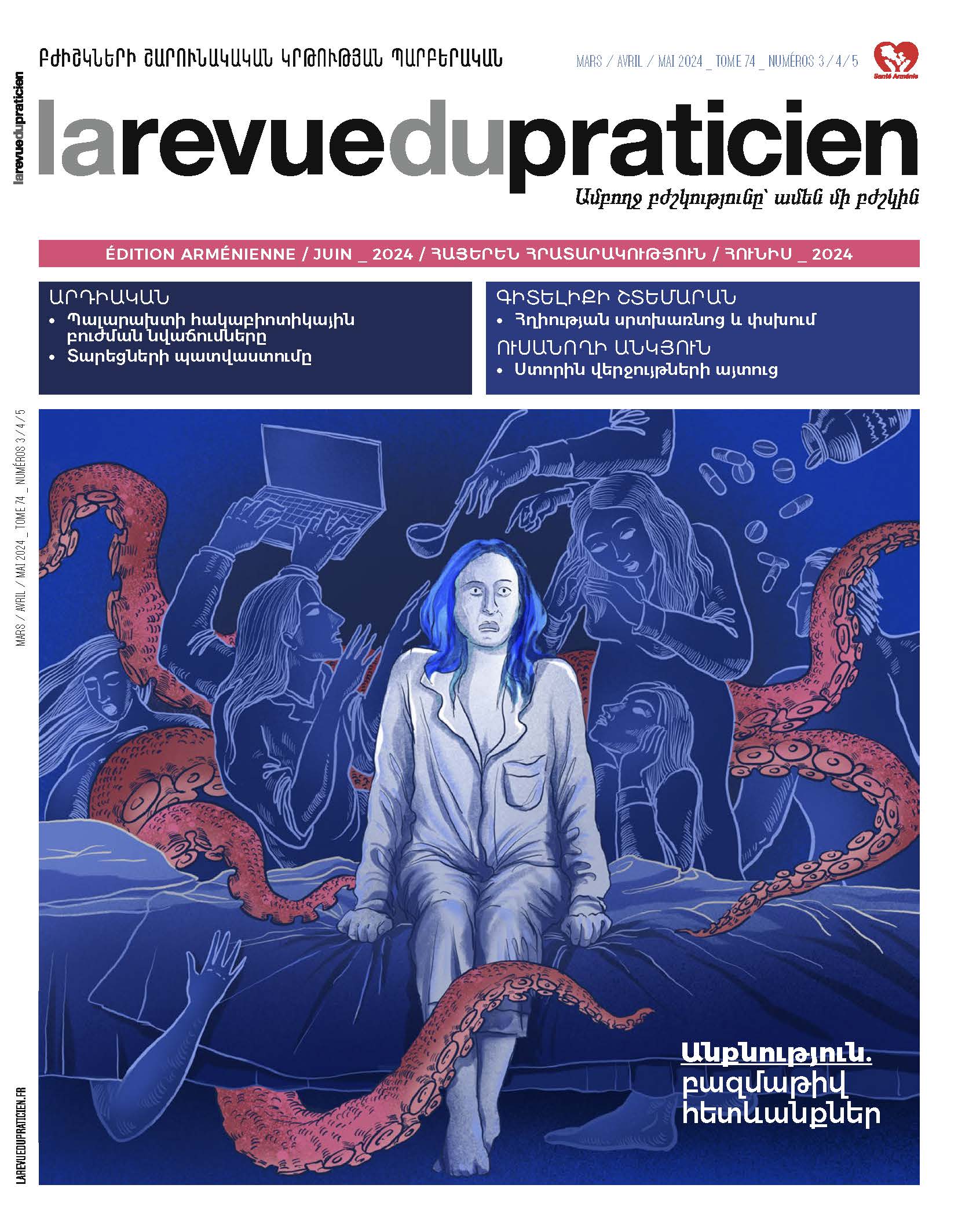Ամփոփագիր
Քրոնիկական անքնությամբ տառապող մեծահասակների առաջին շարքի խնամքը ճանաչողական-վարքային բուժումն է: Սակայն, դրա հասանելիության դժվարություններով պայմանավորված, դեղամիջոցներ դեռևս հաճախակի են նշանակվում: Որպես քնաբեր կիրառության ցուցումով շուկայում վաճառքի թույլտվություն ստացած դեղամիջոցներ կան՝ Z-դեղերը (զոլպիդեմ և զոպիկլոն), որոնք խելամտորեն, ճիշտ դեղաչափով և ճիշտ ժամին ընդունելու դեպքում խթանում են քնի մեկնարկը և ունեն ավելի քիչ անցանկալի հետևանքներ, քան բենզոդիազեպինները, հատկապես՝ երկարատև ազդեություն ունեցողները, որոնց նշանակումից պետք է խուսափել: Դեղորայքի այս դասը ենթակա է նշանակման տևողություն սահմանող (առավելագույնը 28 օր) հատուկ կանոնակարգով:
Որոշ հակահիստամինային դեղամիջոցներ կարող են օգտակար լինել որպես քնաբեր, սակայն՝ արդյունավետության ցածր ապացուցողական հենքով և անցանկալի ազդեցություններով, մասնավորապես՝ հաջորդ օրվա արթնության վրա. դրանցից պետք է խուսափել տարեցների դեպքում։
Որոշ հանգստաբեր հակաընկճախտային դեղամիջոցներ նշանակվում են փոքր չափաբաժիններով, թեև դրանց՝ շուկայում վաճառքի թույլտվության մեջ նման ցուցում չկա:
Բոլորովին վերջերս մելատոնինը՝ կենսառիթմերի ներծին համաժամանեկացնողը, շուկայում վաճառքի թույլտվություն է ստացել 55 տարեկան և ավելի բարձր տարիքի անձանց քնի խանգարումների բուժման համար՝ իր երկարատև ազդեցության դեղաձևով՝ փոխհատուցելով տարիքի հետ այս հորմոնի մակարդակի ֆիզիոլոգիական նվազումը: Առաջացնելով քնկոտություն՝ այն նպաստում է քուն մտնելուն և քնի արդյունավետությանը, հնարավորություն է տալիս բարելավելու դրա տևողությունը և ապահովում է որակյալ արթնացում՝ առանց կախվածության, զրկանքի համախտանիշի և առանց էական վնասակար հետևանքների, եթե ուշադրություն դարձվի դեղաչափին և միջդեղորայքային փոխազդեցությանը։
Վերջապես, Ֆրանսիայում վաճառքի է հանվել նոր դասի դեղամիջոցների՝ օրեքսինների ներհակորդների առաջին ներկայացուցիչը՝ դարիդորեքսանտը: Քրոնիկական անքնության բուժման ռազմավարության մեջ այս դեղանյութերի տեղը դեռևս պետք է հստակեցվի։
Résumé
Le traitement de première intention des adultes atteints d’insomnie chronique est la thérapie cognitivo-comportementale. Toutefois, compte tenu des difficultés d’accès à cette thérapeutique, les prescriptions médicamenteuses restent fréquentes. Considérant les médicaments qui ont une autorisation de mise sur le marché (AMM) dans cette indication, les Z-drugs (zolpidem et zopiclone), prises à bon escient, à la bonne posologie et à la bonne heure, favorisent l’initiation du sommeil et ont moins d’effets indésirables que les benzodiapézines, notamment celles à longue durée d’action, dont la prescription doit être évitée. Cette classe de médicaments est soumise à une réglementation particulière de durée de prescription (28 jours au maximum). Certains antihistaminiques peuvent être utiles comme hypnotiques, avec un faible niveau de preuve d’efficacité et des effets indésirables, notamment sur la vigilance du lendemain; ils sont à éviter chez les sujets âgés. Certains antidépresseurs sédatifs sont prescrits, à faible dose, hors AMM. Plus récemment, la mélatonine, synchroniseur endogène des rythmes biologiques, a obtenu une AMM dans les troubles du sommeil du sujet âgé de 55 ans ou plus, dans sa formulation à longue durée d’action, suppléant la baisse physiologique de cette hormone avec l’âge. Induisant une somnolence, elle favorise l’endormissement, l’efficacité du sommeil, peut améliorer sa durée et assure un réveil de bonne qualité, sans accoutumance, sans syndrome de sevrage, et sans effet délétère majeur si l’on fait attention à la posologie et aux interactions médicamenteuses. Enfin, une nouvelle classe de médicaments, les anti-orexines, compte un premier représentant commercialisé en France: le daridorexant. La place de ces molécules dans la stratégie thérapeutique de l’insomnie chronique devra être précisée.
Abstract
The first line of treatment in adult chronic insomnia is cognitive behavioral therapy (CBT). However, its difficult accessibility limited its use and medications are still often prescribed. Considering the drugs with marketing authorization, Z-drugs (zolpidem and zopiclone) if taken at the right hour and dosage promote sleep initiation and have less deleterious effects than benzodiazepines, especially the long-acting ones which should be avoided. This class of drugs cannot be prescribed longer than 28 days. Some antihistaminic licensed drugs are authorized as hypnotics, with a low proof of efficacy and a risk of adverse event as sedation and somnolence the next day. Their prescription should be avoided in old subjects. Some clinicians used antidepressant sedative medications, at low dosage, as hypnotic drugs but "off label", outside authorization. Now melatonin, an endogenous synchronizer of biologic rhythms, has obtained the authorization for the treatment of insomniac troubles, in subjects of at least 55 years old, in its slow- release formula, replacing the physiological decline of this hormone with aging. Melatonin is not a hypnotic, but has soporific properties, inducing sleep, improving sleep efficacy, sometimes sleep duration and morning alertness. When discontinued, it induced no withdrawal syndrome. It has shown no risk of abuse potential and no deleterious side-effects, if used at the right dose and in the absence of hepatic interaction with other compounds. Finally, a new class of hypnotics, "the orexin antagonists" has its first representative on the French market: daridorexant. The place of these molecules in the therapeutic strategy for chronic insomnia needs to be clarified.
